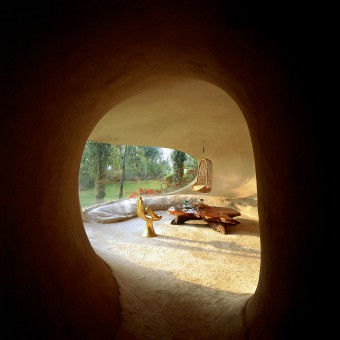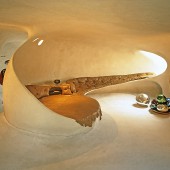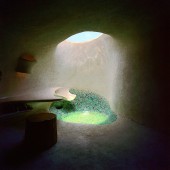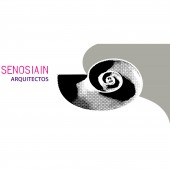Organic House House by Javier Senosiain and Daniel Arredondo |
Home > Winners > #55714 |
 |
|
||||
| DESIGN DETAILS | |||||
| DESIGN NAME: Organic House PRIMARY FUNCTION: House INSPIRATION: The idea was to look at the beginning of the human's origins in nature and the organic space throughout history to develop suitable living spaces. These spaces would be similar to the womb, an animal's lair, a troglodyte dwelling, an igloo.... They would represent not a return to the past but rather a premeditated reconciliation. UNIQUE PROPERTIES / PROJECT DESCRIPTION: The organic house is born with the idea of creating an area adapted for man, according to his environmental, physical and psychological needs. Its origin is in nature, because it looks for areas similar to the maternal womb, to animal shelters, to those of man, who in the beginning, adopted the caverns without modifying its environment, to an igloo and to all the friendly spaces and concave that recall the arms of the mother that cuddles the child. OPERATION / FLOW / INTERACTION: It's important to mention that the thermal characteristics of city surfaces are totally distinct from those in a purely natural environment -the penetration, reflection and absoption of light is different. Earth and sun work together in maintaining a stable temperature within the interior of the house, where the earth protects and the sun provides light and warmth. This kind of underground home is perhaps better lit and more sunny than a conventional home, because its windows can be orientated in any direction, and the domes permit light and sunshine to enter from above. Ventilation is easy owing to the aerodynamic shape of the dwelling, which makes the free circulation of the air possible. With the skeleton of the dwelling complete, the next step was to bury it. The idea was for the garden to cover the house, and fertile soil would be needed for that. Based on the principle of japanese bonsai or dwarfed trees (the less deep the soil, the lower the trees grow), it was decided that the depth of the soil should fluctuate between 15 and 20 centimeters. This would ensure that the grass grew less and slowly, resulting in lower gardening costs. The soil and grass would protect the membrane from sun, wind, hail and the yerly dry-rainy cycles, thus avoiding dilations that cause fissures and allow humidity to enter. Finally we come to some of the economic advantages of this type of construction. Comparatively speaking, structurs made of ferrocement with a double curvature (shell) only need a third of the construction material used in a conventional house. There are also substantial savings in the foundations, the ferrocement shell distributes all stresses over the terrain, so that this foundation in itself is equivalent to the reinforced foundation of a conventional structura, with tha advantage that it also has grater capacity for load transfer because of its shape and monolithic structure. The microclimate contributes to large savings in heating and air conditioning in regions with extreme climates, a factor not always fully appreciated. PROJECT DURATION AND LOCATION: Started in 1984 and finished in 1985 in a suburb of Mexico City FITS BEST INTO CATEGORY: Architecture, Building and Structure Design |
PRODUCTION / REALIZATION TECHNOLOGY: In order to maintain fluidity in the structure, it was necessary to use a mouldable building material that could be shaped in a similar way to the modelling clay used for the models. It was also evident that since this was a house, the building material must not only posses the required plasticity but must also fulfil requirements that would make it more tan a sculptural mass. After much investigation there was Little doubt that ferrrocement was the best solution. It promised a monolithic, resistant, mouldable structure of great elasticity. The construction of the actual building began with a steel bars frame which was placed over the outline, forming a metal skeleton in which the ribs were arranged like rings, varying in height according to the space required. The next step was to roll the ribs into the shape of a spiral. With the framework assembled, two lenghts of interwoven, enmeshed wire netting were attached, and mortar with little water content was cast on top, achieving a 4 centimetres shell. SPECIFICATIONS / TECHNICAL PROPERTIES: 180 square meters construction in a 300 square meters land. 300 square meters of garden. TAGS: Organic architecture, Bio architecture, Free form architecture, Sensous architecture, Biomorphic architecture RESEARCH ABSTRACT: The house was a reflection on twenty years of investigation into the complex reticulate world of the organic and reflect on the spaces which man can adapt. Since his appearance on the earth, man has continuously transformed the environment for his own convenience, at an almost unlimited pace. This process has become faster in the last 50 years, especially in areas of civilisation and city planning. When man creates, he usually destroys the natural, forgetting that he and the rest of nature need to co-exist in harmony with each other. CHALLENGE: From the beginning, commercial, industrial, or conventional interests were put aside, along with any inherited social or academic prejudices regarding architecture. This meant that constructional materials and technologies could be chosen without paying too much attention to their past or present use; instead, importance was placed on their ability to create continuous, ample, integral spaces which would liberate shapes- The spaces would have built-in, integrated furniture that would facilitate air circulation and take advantage of a great part of the constructed area. At the same time, it was intended that the changing spaces inside would generate changing volumes on the outside -green "dunes" that would invite rest and meditation, while children could slide down their slopes. ADDED DATE: 2017-02-27 21:23:31 TEAM MEMBERS (1) : Daniel Arredondo Bayardi IMAGE CREDITS: Image #1: Photographer Javier Senosiain Image #2: Photographer Javier Senosiain Image #3: Photographer Javier Senosiain Image #4: Photographer Javier Senosiain Image #5 Photographer Javier Senosiain |
||||
| Visit the following page to learn more: http://organicarchitecture.weebly.com/ | |||||
| AWARD DETAILS | |
 |
Organic House House by Javier Senosiain and Daniel Arredondo is Winner in Architecture, Building and Structure Design Category, 2016 - 2017.· Read the interview with designer Javier Senosiain and Daniel Arredondo for design Organic House here.· Press Members: Login or Register to request an exclusive interview with Javier Senosiain and Daniel Arredondo. · Click here to register inorder to view the profile and other works by Javier Senosiain and Daniel Arredondo. |
| SOCIAL |
| + Add to Likes / Favorites | Send to My Email | Comment | Testimonials | View Press-Release | Press Kit |
Did you like Javier Senosiain and Daniel Arredondo's Architecture Design?
You will most likely enjoy other award winning architecture design as well.
Click here to view more Award Winning Architecture Design.








